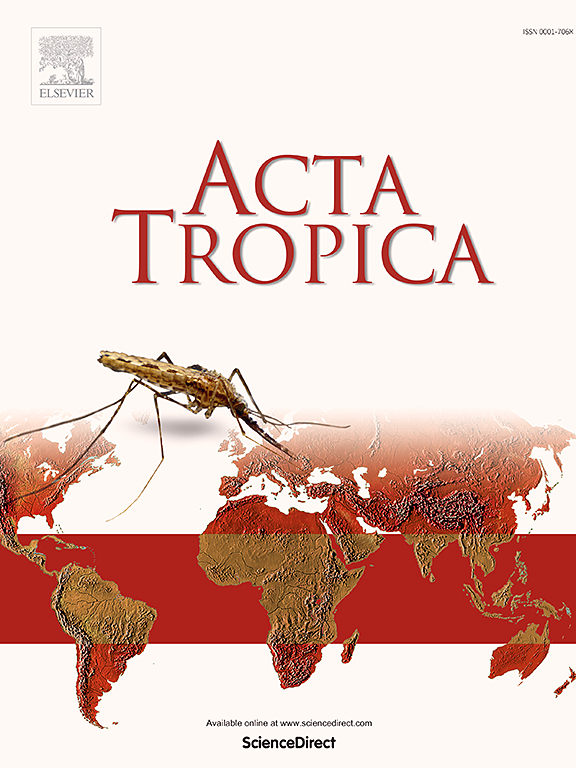SFTS病原菌:大别班达病毒系统发育分析及在线基因分型工具的开发
IF 2.1
3区 医学
Q2 PARASITOLOGY
引用次数: 0
摘要
大别班达病毒(Bandavirus dabiense, DBV)是SFTS的病原体,被列入世界卫生组织2017年需要紧急关注的重点传染病清单,属于一个庞大且高度多样化的RNA病毒类别。目前,由于缺乏统一的DBV基因分型标准,常见的基因分型系统之间存在混淆,导致研究结果存在差异,限制了基因分型数据的临床应用。本文通过对GenBank中738条DBV s段序列进行重新聚类,鉴定出7个进化支(DS1-DS7),并将这些进化支与已发表文献中常用的3种基因分型策略进行比较,阐明不同基因分型结果之间的水平关系。日本和韩国的主要基因型为DS3、DS5、DS7(77.23%, 156/202),而中国的主要基因型为DS1、DS2、DS4、DS6(94.03%, 504/536)。此外,我们开发了一个基于DS基因分型策略的在线DBV基因分型工具,以支持进一步的基因分型和临床预后研究。对61份临床样本进行了系统发育聚类分析和在线工具的验证,所有样本均获得相同的DS基因分型结果,两种方法的一致性为100%。这些发现为DBV提供了标准化的基因分型框架,为未来的研究和临床应用提供了可靠的工具,有助于更好地了解其流行病学和疾病预后。本文章由计算机程序翻译,如有差异,请以英文原文为准。
The pathogen of SFTS: Bandavirus dabieense phylogenetic analysis and development of an online tool for genotyping
Bandavirus dabieense (DBV), the pathogen of SFTS that was included in the WHO's list of priority infectious diseases requiring urgent attention in 2017, belongs to a large and highly diverse class of RNA viruses. Currently, the lack of a unified DBV genotyping standard and the confusion among common genotyping systems cause research result discrepancies and limit the clinical use of genotype data. Here, we re-clustered 738 DBV S-segment sequences from GenBank and identified seven clades (DS1-DS7), and elucidated the horizontal relationships among different genotyping results by comparing these clades with three commonly used genotyping strategies in published literature. The predominant genotypes in Japan and South Korea are DS3, DS5, DS7 (77.23 %, 156/202), while in China, DS1, DS2, DS4, DS6 (94.03 %, 504/536) are more prevalent. Additionally, we developed an online DBV genotyping tool based on the DS genotyping strategy to support further genotyping and clinical prognosis research. The tool was validated with 61 clinical samples, all these samples yielded identical DS genotyping results using both the phylogenetic clustering analysis and the online tool, indicating a 100 % concordance among the two methods. These findings provide a standardized genotyping framework for DBV and offer a reliable tool for future research and clinical applications, facilitating better understanding of its epidemiology and disease prognosis.
求助全文
通过发布文献求助,成功后即可免费获取论文全文。
去求助
来源期刊

Acta tropica
医学-寄生虫学
CiteScore
5.40
自引率
11.10%
发文量
383
审稿时长
37 days
期刊介绍:
Acta Tropica, is an international journal on infectious diseases that covers public health sciences and biomedical research with particular emphasis on topics relevant to human and animal health in the tropics and the subtropics.
 求助内容:
求助内容: 应助结果提醒方式:
应助结果提醒方式:


